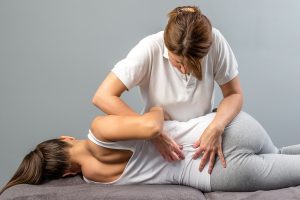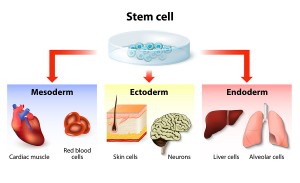There are many possible causes of back pain and their treatment is described in this blog. I have listed the 10 most common causes of back pain below. I also added brief therapeutic suggestions.
Facet joint disease (lower back strain)
When there is a misalignment of the facet joints, the joint capsules of these small joints are pulled, which can cause severe back pain. Chiropractic or physiotherapy treatments initially followed by active exercises will help (facet joint pain).
Degenerative disc and facet joint disease
Degenerative changes of the disc material between vertebral bodies and osteoarthritis of the facet joints can cause back pain. This is due to irritation of the nerve roots. Anti-inflammatory medication and physiotherapy treatments often help; swimming will be beneficial as well. End stage intractable disease, if confined to one or two levels, may respond to fusion surgery by a spinal surgeon. While you research the surgical option, I suggest you investigate about the possibility of stem cell therapy with PRP (platelet rich plasma). This is less invasive and will likely heal better than conventional surgery.
Spondyloarthropathies
This is a family of chronic inflammatory joint diseases of the spine . The physician treats the underlying disease and uses anti-inflammatories to control inflammation. Most of all, a person with this condition needs a referral to a rheumatologist for more specific therapy.
Osteoporosis
Osteoporosis is a bone condition that can lead to compression fractures of the spine. These in turn can irritate one of the nerve roots to lea to radiating pain into one or both legs. The physician will treat the underlying hormone disbalance, if present. Regular walking and swimming are used to remobilize. Avoid alcohol, caffeine and stop smoking. Supplements like calcium, bisphosphonates, vitamin D in higher doses and vitamin K2 can help re-calcify the bone.
Scoliosis
Scoliosis is often congenital. This spinal curvature leads to back pain and hurts more the more the spine is curved. Treatment: bracing during growth spurts; good posture; strengthening exercises; in severe cases corrective surgery by a spinal surgeon through the use of Harrington rods.
Spinal stenosis
Spinal stenosis is often the end condition of severe degenerative arthritis of the spine. It is more common in the older generation. As this link explains, there is a narrowing of the channel through which the spinal cord travels. In the past decompression surgery for severe cases was the only means to free spinal cord and nerve roots. In the last few years stem cell therapy is a new addition as an alternative to orthopedic surgery. The advantage of stem cell therapy is that there is no scarring following the procedure and the stem cells function like a biological knife from inside.
Posttraumatic fibromyalgia
Some people develop lower back pain following traumatic injuries. Instead of resolving their muscle sprain, they end up with chronic pain. Often low dose antidepressants and cognitive therapy will help. Mild physical exercises may help to rehabilitate the patient and return to normal muscle mobility. Unconventional therapy like prolotherapy, dry-needling and low-dose laser therapy (Dr. Weber) may be useful.
Disc herniation with or without sciatica
With disc herniation the back pain is intense, which often prompts the orthopedic surgeon to do an early discectomy (back surgery). But long term studies have shown that only in 3% of all acute back pain cases surgery is necessary; many cases heal on their own. In this case the new regenerative medicine approach of stem cell therapy with PRP will give superb clinical results. Stem cells will rebuild the disc and also take care of any arthritis in the small joint along the spine.
Spondylolisthesis and other congenital malformations
There are 4 grades of slipped vertebral body diseases (spondylolisthesis), where grade IV is the most severe case. Grade I to IIIA do not need surgery, stage IIIB and IV need fusion with instrumentation by a spinal surgeon.
Bone metastases
In stage 4 of many cancers metastases travel through the whole body including the skeleton. The underlying cancer needs treatment, often chemotherapy is required. Unfortunately cancers with bone metastases have a very poor prognosis. Here is a link how to manage symptoms of bone metastases.
Conclusion
I have listed the ten most common ones of back pain. For muscle spasms, simple physiotherapy or chiropractic treatment are often very helpful. Early degenerative changes in joints and discs will often respond to anti-inflammatory medication. But anti inflammatory drugs can be hard on your liver and your kidneys. If your back pain is getting more chronic, your doctor may want to arrange for an MRI scan of the area that causes pain. If this shows degenerative change in the discs and facet joints it is time to contact a regenerative medicine clinic. They specialize in stem cell and platelet rich plasma (PRP) treatments. This may be what you need to restore your back to normal. Conventional surgical methods are often the choice, but they are not always successful. Surgery can leave scarring behind, which by itself can give you chronic back pain.







